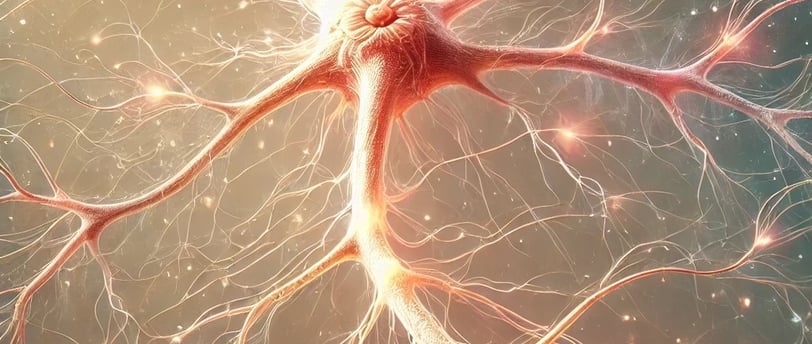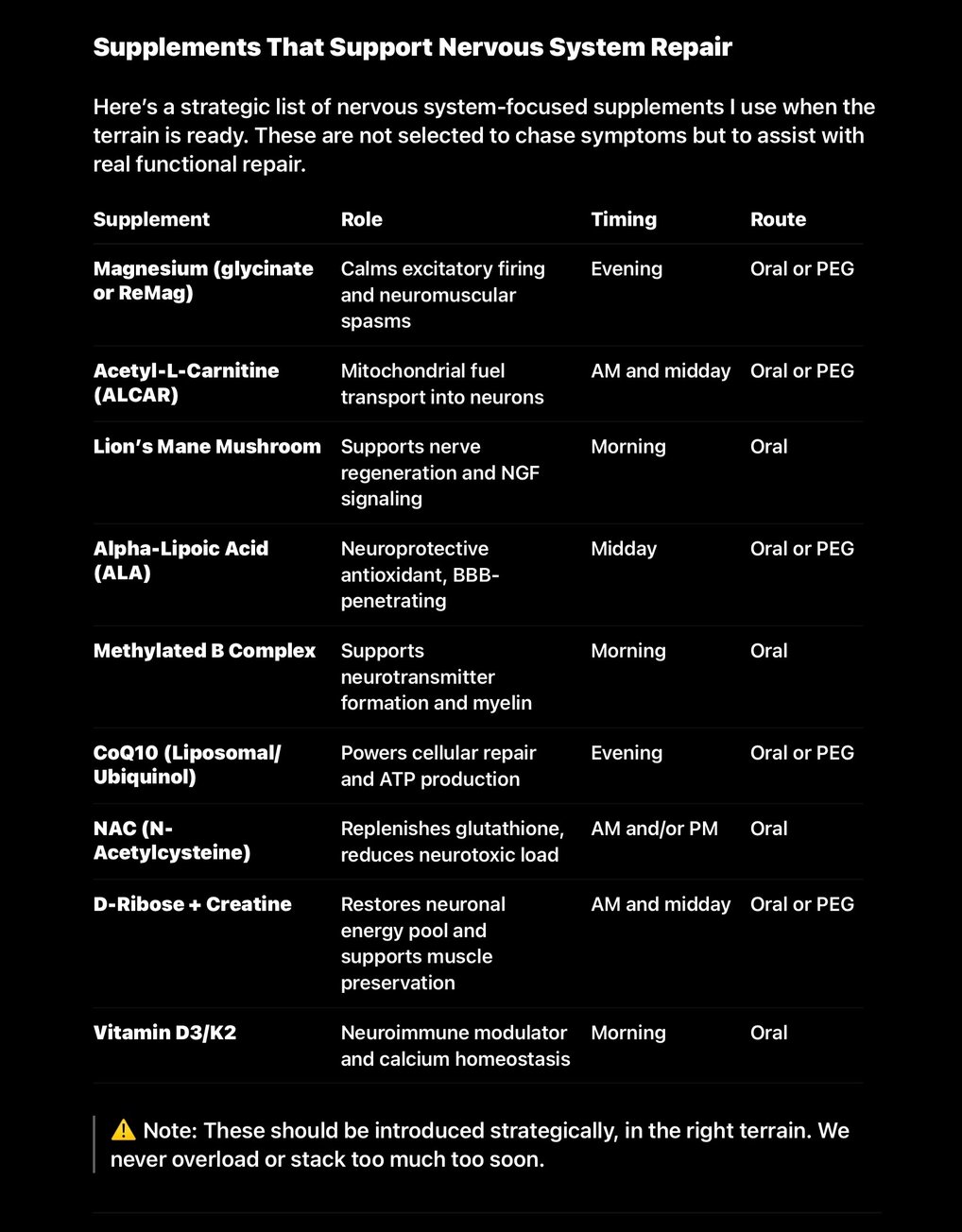🧠 Reverse Engineering ALS: The Nervous System
ALS begins with neurological breakdown—but it doesn’t have to end there. This deep dive into the Nervous System explains how motor neurons collapse in ALS, what you’ll find in the MindMap, and exactly how the BCP protocol and key supplements work to calm, stabilize, and rebuild the brain-body connection.
REVERSE ENGINEERING ALSNERVOUS SYSTEMMIND MAP SERIESBCP PROTOCOLNEUROLOGICAL SUPPORT
Hiedi Handford
5/28/20252 min read


The nervous system is the master communication network of the body. It coordinates muscle movement, breathing, balance, digestion, swallowing, cognition, and every moment of sensory feedback we experience. It includes the brain, spinal cord, cranial nerves, and every motor and sensory nerve that runs through the body. In ALS, the nervous system doesn’t fail overnight—it breaks down piece by piece, due to a hostile terrain and overwhelmed support systems. This is why neurological collapse often happens alongside digestive issues, immune misfires, spasticity, and mitochondrial burnout. We don’t just address symptoms—we rebuild from the root.
In ALS, core nervous system failures include motor neuron death from chronic overstimulation, glutamate toxicity damaging brain and spinal cord signaling, calcium overload in neurons triggering self-destruction, oxidative stress and mitochondrial collapse starving the neurons of energy, neuroinflammation from misfiring glial cells and barrier breaches, and disrupted drainage and detoxification leading to protein aggregation and signal failure. This isn’t just a matter of muscle weakness. It’s a terrain crisis that leads to nervous system degradation.
In the Royal Blue branch of the ALS MindMap, the Nervous System includes core dysfunctions such as neuron degeneration, signal disruption, and synaptic breakdown. Root causes include glutamate overload, neuroinflammation, mitochondrial failure, and reactive oxygen species (ROS). Therapeutic strategies focus on cannabinoid signaling support, neuroplasticity engagement, mitochondrial restoration, and terrain recalibration. This map helps you visually understand what ALS is doing to the system—and where true reversal work begins.
The core protocol I use is strategically designed to calm neuroinflammation, regulate overstimulated neurons, and begin the slow process of restoring stability. This includes a high-dose cannabinoid-based foundation that combines CBD, beta-caryophyllene, and a proprietary oil blend designed for neurological modulation. Together, this approach targets CB1 and CB2 receptor pathways, modulates glutamate signaling, supports brainstem and spinal nerve regulation, and begins calming the system from the inside out. Therapeutic dosing starts at no less than 250 mg per dose, three times per day—that’s the minimum threshold to achieve meaningful neurological engagement. Anything less is subclinical. The full details of this protocol are proprietary and delivered through my guided system. If you’d like to learn how this might apply to you or your loved one, you can contact me directly.
Beyond the core protocol, some individuals may benefit from alternative supports that are showing promising effects in early research. THCA (tetrahydrocannabinolic acid) is a non-intoxicating cannabinoid studied for its anti-inflammatory and neuroprotective properties. Route and timing are individualized. Psilocybin, in carefully managed settings, may enhance neuroplasticity, emotional stability, and neural network regeneration when used in specific neurological contexts. Microdosing protocols vary and require terrain readiness. These are not part of the foundational protocol and are introduced only under strict guidance, if at all. Please reach out to me if you’re considering integrating any of these options.


Support
Guidance and community for ALS patients and families.
Resources
info@alscomfortnetwork.com
+1-305-978-3595
